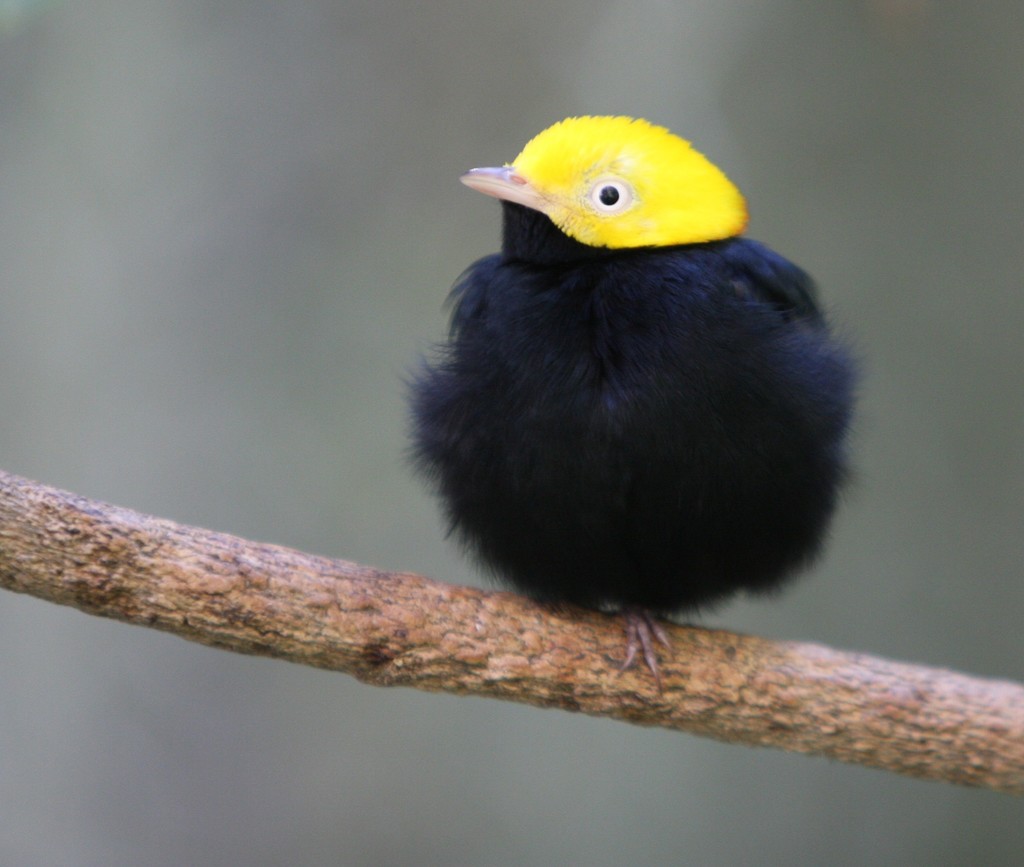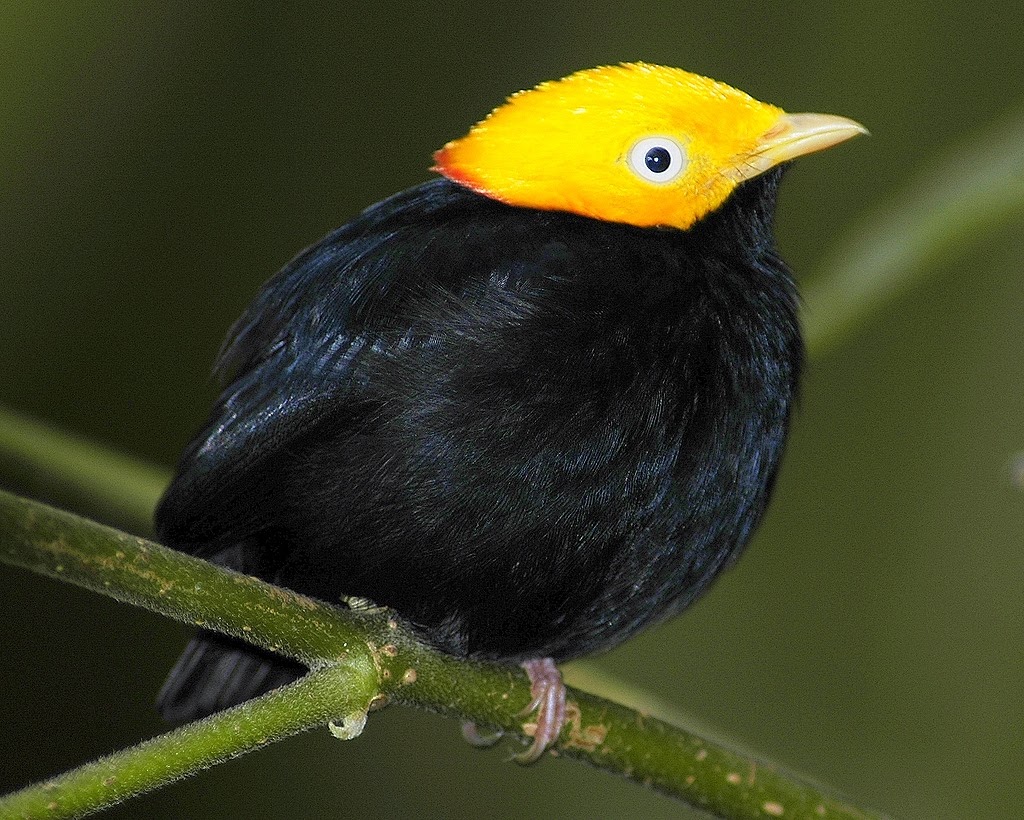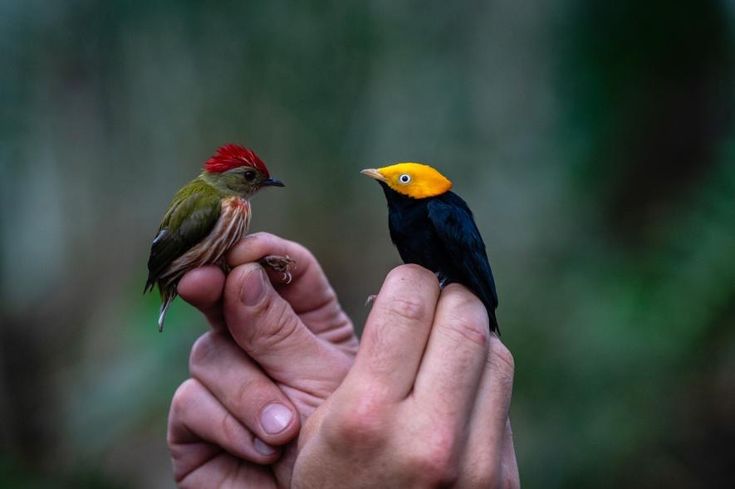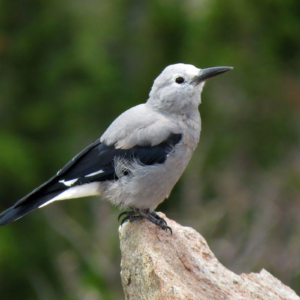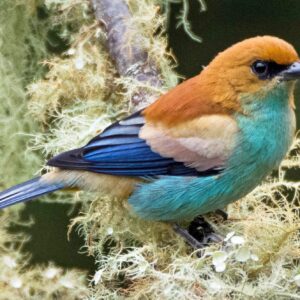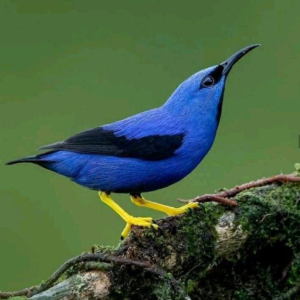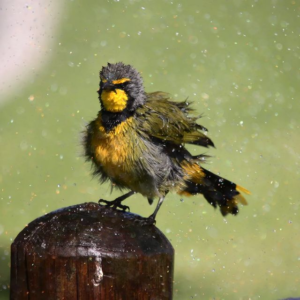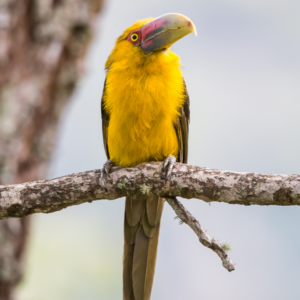The red and white combinations stand out against that black body and shiny gold head, making it a distinctive bird!
Meet the golden-headed manakin
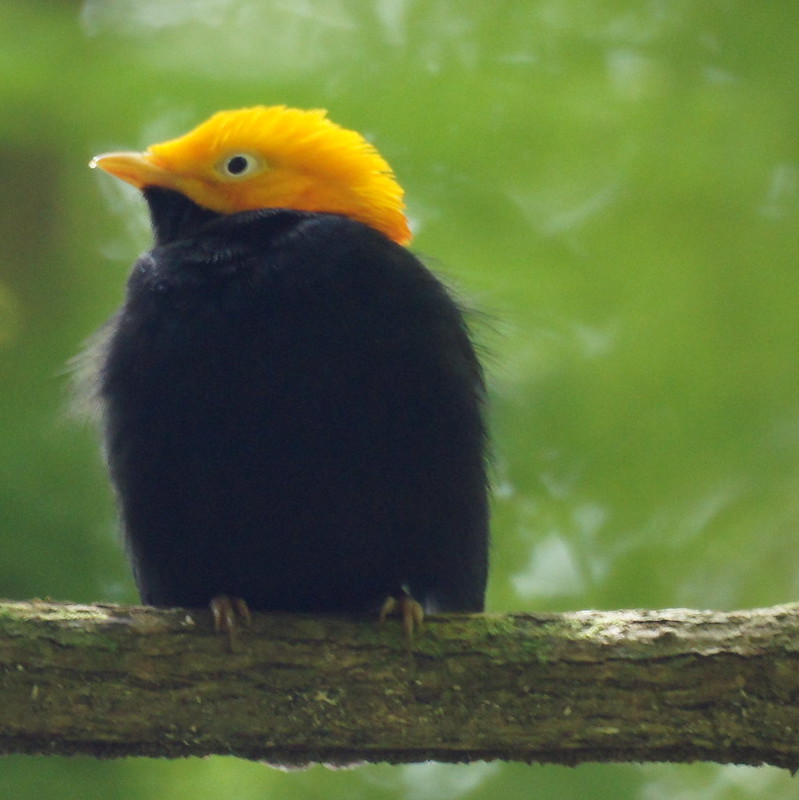
The golden-headed manakin (Ceratopipra erythrocephala) is a small, compact, brightly colored passerine bird. The adult male has a black body, with red and white thighs. Its head is orange-yellow on the forehead, crown, cheeks and upper part of the neck. This golden yellow helmet is slightly edged with red, which is very confusing and difficult to see. The thin beak is yellowish white. His eyes are white. The legs and feet are pinkish brown.
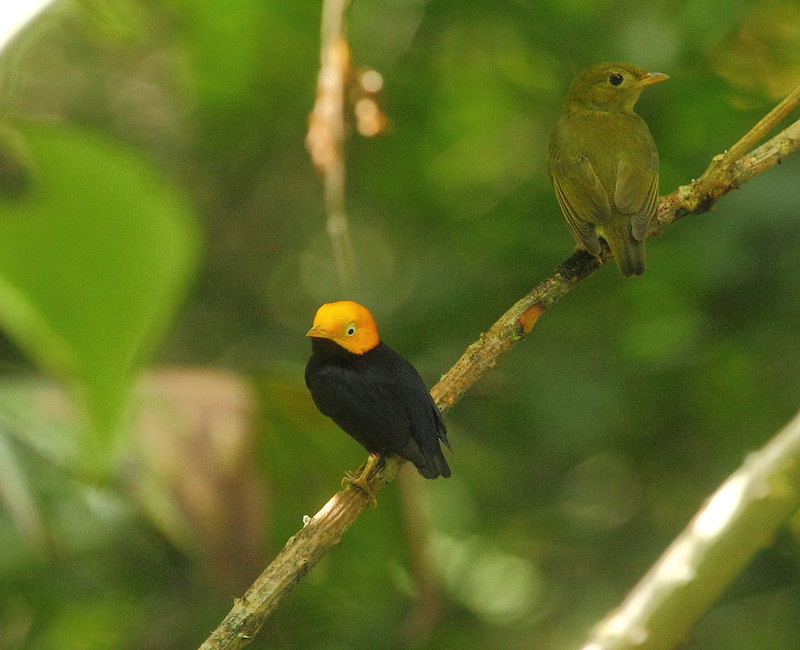
The female is very different from the male and difficult to spot with an overall olive green plumage. Their underparts are paler, mostly with a washed yellowish belly.
He has gray eyes instead of white. The juvenile is similar to the female.

These birds are residents and endemic to Panama, Colombia and Trinidad, as well as the Guianas, Brazil and northern Peru.
Golden-headed grasshoppers prefer moist forests, mainly open second-growth forests. It is visible up to 1100 meters high, but locally it can be seen up to 2000 meters.
The Golden-headed Manakin is primarily frugivorous, feeding mainly on small fruits and berries, particularly the berries of Miconia, of the family Melastomataceae, and also Rubiaceae, plucked from the wing. Although it will also catch insects in flight or from vegetation.
The male golden-headed manakin has a fascinating breeding display on a communal lek. Each male occupies a horizontal perch 6 to 12 m high and quickly jumps and glides, or darts toward other perches. The display is accompanied by the whirring of wings and a zit-zit buzz. Groups of up to 12 birds can act together.
The female builds a shallow, cup-shaped nest at the bottom of a tree, in which she lays two yellowish eggs with brown spots, which she incubates for about 16 to 17 days.
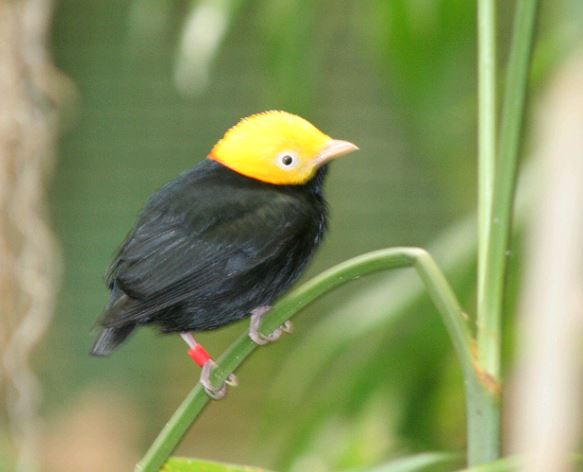
Golden-headed manakins are considered fairly common to common throughout most of the range. This species is not considered threatened.

Watch this bird right here in the video below:
